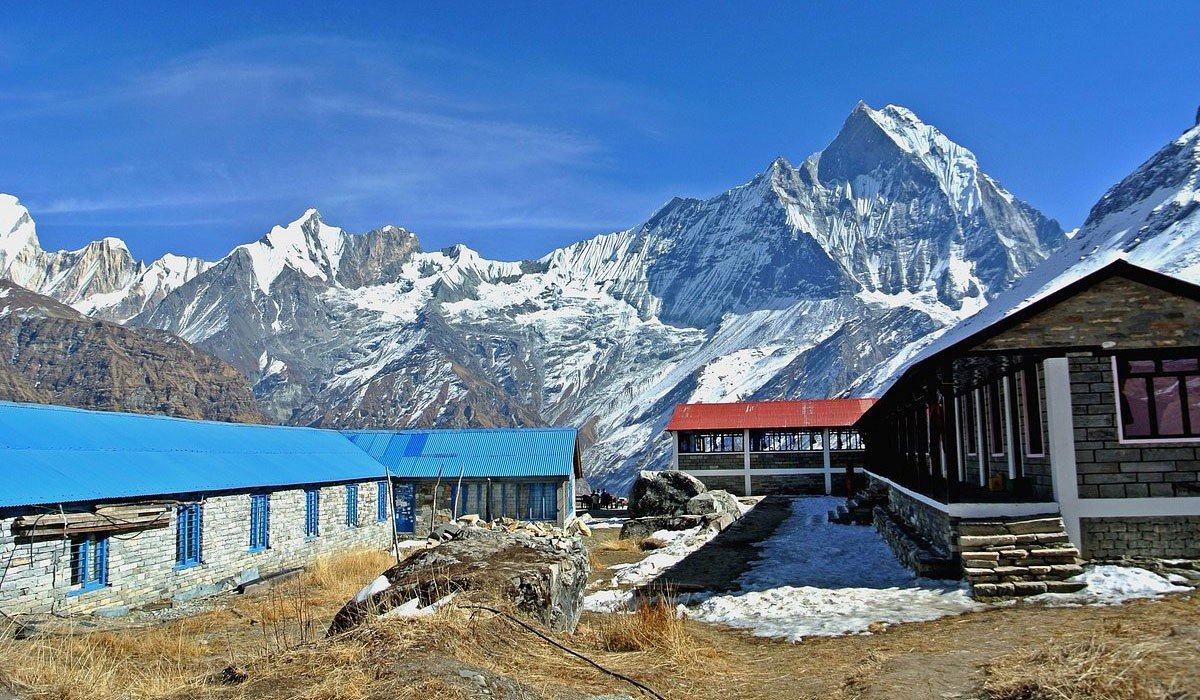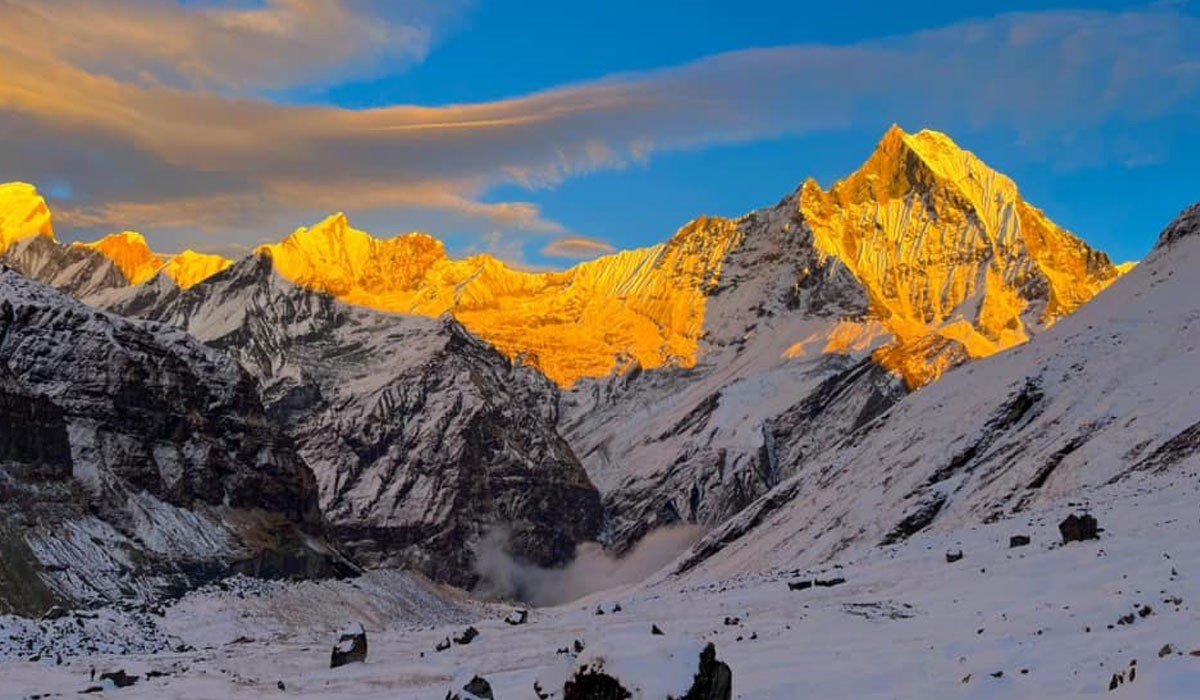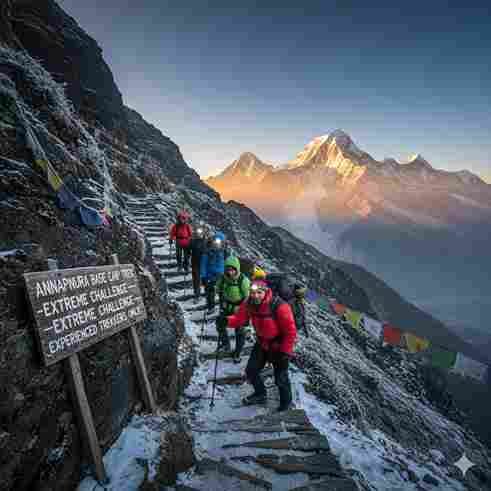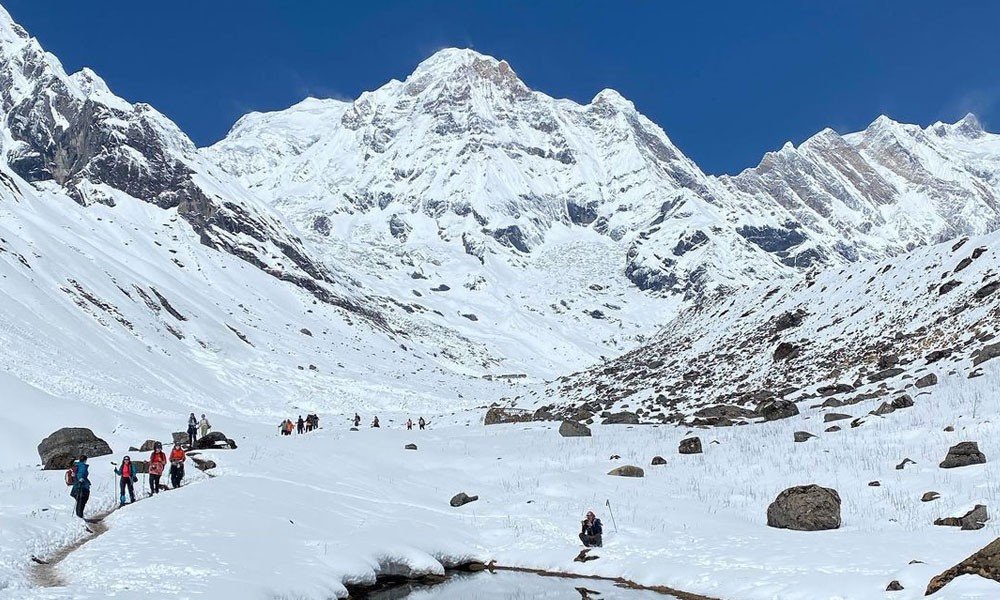
Annapurna Base Camp Trek
Nepal is renowned for its spectacular trekking routes, and the Annapurna Base Camp Trek stands out as one of the most popular and rewarding journeys in the Himalayas. Known for its stunning mountain vistas, lush forests, cultural diversity, and accessible trekking trails, the Annapurna region offers an unforgettable adventure for trekkers of all levels. This guide provides everything you need to know about the Annapurna Base Camp Trek, including the itinerary, cost, difficulty level, best season, highlights, and essential tips for a safe and enjoyable journey.
Why Choose the Annapurna Base Camp Trek?
The Annapurna Base Camp Trek is renowned for its panoramic views of the Annapurna massif, including iconic peaks like Annapurna I, Annapurna South, Machapuchare (Fishtail), and Hiunchuli. Unlike some other trekking routes in Nepal, this trek combines breathtaking natural scenery with rich cultural experiences. Trekkers pass through traditional Gurung and Magar villages, terraced rice fields, rhododendron forests, and alpine meadows.
One of the key reasons many adventure enthusiasts choose the Annapurna Base Camp Trek is its accessibility. The trails are well-marked, and teahouses along the route provide meals, basic lodging, and sometimes hot showers. This makes it an excellent option for beginners or first-time trekkers who want to experience the Himalayas without needing technical climbing skills.
Best Time to Go for the Annapurna Base Camp Trek
The Annapurna Base Camp Trek can technically be attempted year-round, but the ideal seasons are:
Autumn (September to November): This is the most popular time for trekking. Clear skies provide stunning mountain views, and the weather is generally stable.
Spring (March to May): Trekkers enjoy blooming rhododendron forests and mild temperatures.
The monsoon season (June to August) is generally avoided because heavy rains can cause slippery trails, landslides, and cloudy mountain views. Winter (December to February) is less crowded but can be very cold at higher altitudes.

Annapurna Base Camp Trek Itinerary
A typical Annapurna Base Camp Trek lasts 7 to 12 days, depending on the pace and side trips. Here’s a detailed day-by-day itinerary:
Day 1: Arrival in Pokhara
Pokhara is the gateway to the Annapurna region. Before the trek, take time to explore Phewa Lake, Devi’s Fall, and the lakeside town. This day allows trekkers to rest and prepare for the journey ahead.
Day 2: Drive to Nayapul, Trek to Tikhedhunga or Ghorepani
The trek begins with a scenic drive from Pokhara to Nayapul, followed by a gradual hike through villages, terraced fields, and forests. Tikhedhunga or Ghorepani is the first overnight stop.
Day 3: Trek to Ghorepani/Poon Hill
Trek through rhododendron and oak forests to reach Ghorepani. An early morning hike to Poon Hill rewards trekkers with a spectacular sunrise view over the Annapurna and Dhaulagiri ranges.
Day 4: Trek to Tadapani
The trail continues through dense forests and alongside streams. Tadapani offers panoramic mountain views and a peaceful overnight stay.
Day 5: Trek to Chomrong
Descend into the Chomrong valley and experience local Gurung culture. Chomrong serves as the gateway to higher regions of the Annapurna sanctuary.
Day 6: Trek to Dovan or Bamboo
The trail ascends gradually, passing waterfalls and lush vegetation. Overnight stay at Dovan or Bamboo teahouses.
Day 7: Trek to Deurali or Machapuchare Base Camp
A more challenging day with steeper ascents, offering incredible mountain vistas. Overnight stay at Deurali or Machapuchare Base Camp.
Day 8: Trek to Annapurna Base Camp
Arrive at the Annapurna Base Camp, surrounded by towering Himalayan peaks. Enjoy stunning 360-degree views, take photos, and soak in the serene beauty of the Annapurna sanctuary.
Day 9–10: Return to Pokhara
Trek back along the same route and drive to Pokhara. Relax, enjoy local cuisine, and celebrate the successful completion of the trek.
Cost of the Annapurna Base Camp Trek
The cost of an Annapurna Base Camp Trek depends on whether you trek independently or hire a trekking agency:
Independent Trek: $400–$600 (including food, accommodation, permits)
Guided Trek: $600–$1,200 (including guide, porter, meals, accommodation, and permits)
Permits required include:
Annapurna Conservation Area Permit (ACAP)
Trekkers’ Information Management System (TIMS) card
Hiring a guide or porter is optional but highly recommended, especially for first-time trekkers.

Annapurna Base Camp Trek
Annapurna Base Camp Trek Difficulty Level
The Annapurna Base Camp Trek is considered moderate in difficulty. While technical climbing skills are not required, trekkers should be physically fit to handle daily hikes ranging from 4 to 7 hours over varied terrain. The base camp sits at 4,130 meters (13,550 feet), so proper acclimatization and pacing are essential to avoid altitude sickness.
Highlights of the Annapurna Base Camp Trek
Panoramic Mountain Views: Annapurna I, Annapurna South, Machapuchare (Fishtail), Dhaulagiri, and Hiunchuli.
Diverse Landscapes: Forests, rivers, waterfalls, terraced fields, and alpine meadows.
Cultural Experiences: Visit traditional Gurung and Magar villages along the route.
Teahouse Trekking: Comfortable lodging and local cuisine.
Poon Hill Sunrise: Iconic panoramic view of the Himalayan peaks.
Photography Opportunities: Spectacular landscapes for memorable photos.
Wildlife Encounters: Possibility to spot langurs, pheasants, and Himalayan birds.
Essential Tips for the Annapurna Base Camp Trek
Pack Light: Only essentials; trekking boots, warm clothing, and rain gear are necessary.
Hydrate Well: Drinking enough water prevents altitude sickness.
Hire a Guide/Porter: Helps with navigation and carrying luggage.
Respect Local Culture: Be polite, avoid littering, and follow customs.
Acclimatize Properly: Take rest days if needed.
Cash: ATMs are scarce in remote villages; carry sufficient Nepali Rupees.
Fitness Preparation: Cardio and leg-strength exercises before the trek are recommended.
Why the Annapurna Base Camp Trek Is Unique
The Annapurna Base Camp Trek is more than a physical journey; it is a cultural and spiritual experience. Trekkers not only witness awe-inspiring mountains but also immerse themselves in local lifestyles, taste traditional foods, and learn about the history and beliefs of Himalayan communities. The combination of natural beauty, cultural richness, and well-established trekking infrastructure makes it a top choice for both beginners and experienced adventurers.
The Annapurna Base Camp Trek is one of Nepal’s most rewarding trekking adventures. From lush forests to high alpine landscapes and majestic Himalayan peaks, every step is filled with awe-inspiring sights. With careful planning, proper acclimatization, and respect for local culture, trekkers can enjoy a safe, memorable, and life-changing journey. Whether you are a first-time trekker or a seasoned adventurer, the Annapurna Base Camp Trek promises an experience you will cherish forever.



